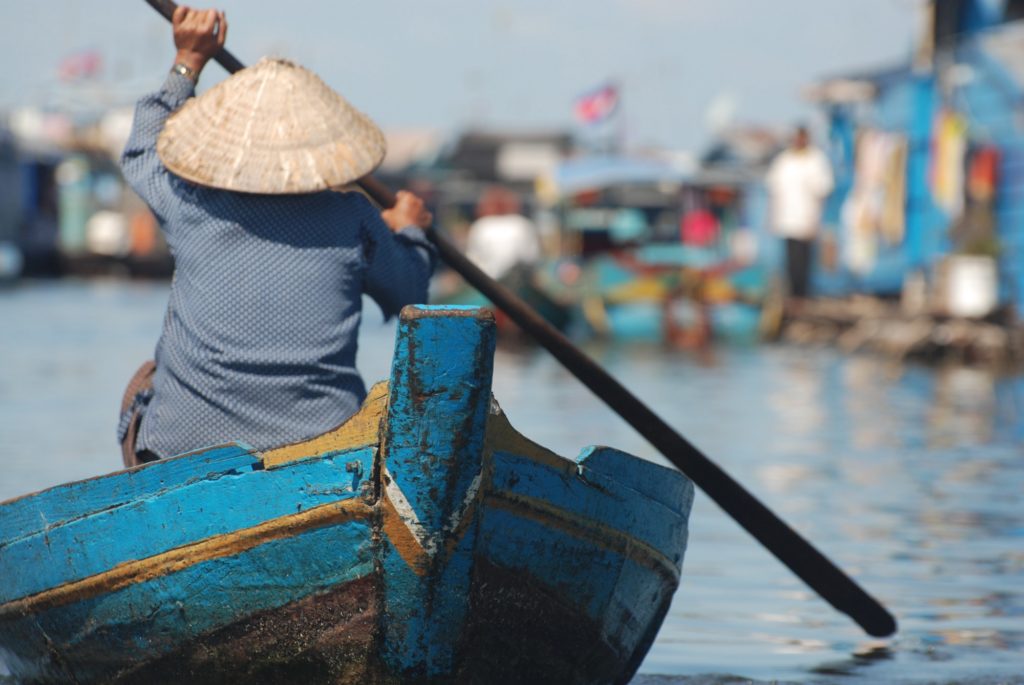On a river where water is both food and power, Future H2O is about to apply science and new data to optimize for both—and potentially improve the daily lives of tens of millions.
By John Sabo, director, Arizona State University-Future H2O
Seventy million people live in the Lower Mekong River region. About 70 percent of them get half of their animal protein from freshwater fish that comes directly from the Mekong—so that river needs to keep producing fish for the foreseeable future. In the Mekong, water is food.
But at the same time, placing hydropower dams along the Mekong is a key step in vaulting millions of these people from rural poverty into developed economies. In the Mekong, water is also energy, and a modern life. So optimizing both energy and food (along with flooding) is crucial for a sustainably prosperous Lower Mekong.
Two years ago, I and other researchers published a paper in Science that introduced the world to an algorithm that shows how the Mekong River could be managed for fish production. It is the first flow regime designed explicitly for the environment and the first such objective function for maximizing food security in the context of dam operations.
River managers across the world — from the Bonneville Power Authority to the Army Corps of Engineers to the China Yangtze Power Co. Ltd. — routinely trade off these objective functions for hydropower and flooding. But our research marked the first time such a tradeoff equation had included an objective function for the environment.
This will be the first time the environment has had a seat at the table for managing a river as big as the Mekong. And this project will be the first time anywhere in the world where a data-driven platform is enabling delivery on the three objectives: optimized food, energy and flooding.
— John Sabo
I just returned from meetings in Laos with the Mekong River Commission (MRC) to formalize a collaborative relationship to provide river operations and data management for the Mekong. We’ll be establishing an operations platform at the heart of the river and figuring out how to coordinate the basin’s 60+ dams in a way that delivers environmental flows and maximizes hydropower production.

This will be the first time the environment has had a seat at the table for managing a river as big as the Mekong. And this project will be the first time anywhere in the world where a data-driven platform is enabling delivery on the three objectives: optimized food, energy and flooding.
To create the algorithm, we used the MRC’s rich data reserves and linked data on water (hydrology) and fish in a statistical model that we borrowed from economics. In the Science paper, we used this model to create a scenario planning tool, which we then applied in thought exercises to dams and basins to see if we could get them to meet objectives that were previously thought not to be meetable. We were able to meet them. In fact, we engineered a flow regime from the Mekong that does better for fish than that provided by the Mekong’s natural flow regime with all the dams removed from the basin.
I am who I am and I do what I do in large part because I love salmon — both as a sports fisherman and a foodie. As much as I like to study and eat and work to conserve salmon, they’re not an integral part of food security in the United States. They’re not on the table every night in the way fish from the Mekong are on the table of the majority of households in Cambodia. In a place where water is food and water is power, we’re looking to deliver abundance, not scarcity. I’m thrilled at this opportunity to use science and new data to potentially improve the daily lives of tens of millions of people.
